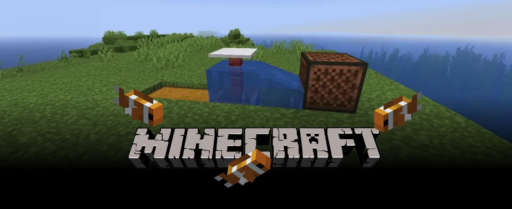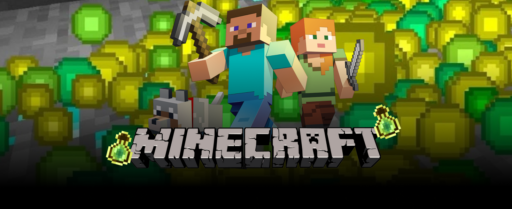Navigating these resource-rich biomes can be challenging if you’re unfamiliar with what each one has to offer. Whether you’re venturing through dense forests, braving icy tundras, or constructing in scorching deserts, understanding the specifics of each biome is crucial. This guide will take you through most iconic Minecraft Biomes, detailing their resources to help you make the most of each environment.
Forest Biome
Well, as the name suggests it, the forest Biome is sprawling with lush greenery, tall oak and birch trees, and a variety of animals like cows, pigs, and chickens. Forest Biomes are the most common biomes in Minecraft, and they work as a good starting point for any player due to the abundance of resources in it.
Resources: Wood, mushrooms, flowers, and plenty of animals for food.
Snowy Tundra Biome
A vast barren landscape, covered from top to bottom in snow and ice, occasionally having patches of spruce trees throughout the region. Snowy Tundra are some of the most harshest biomes in Minecraft with their lack of proper resources. This biome works for players who seek a challenge. Beware of polar bears, though, as the biomes are home to polar bears.
Resources: Snow, Ice, spruce wood, and igloos that sometimes contain hidden treasure or even zombie villagers.
Desert Biome
If players seek adventure, the desert biome is for them. The scorching heat and a lack of water have turned this place into a barren wasteland populated by dry tress and cacti. While exploring this wasteland, players can stumble upon desert temples and find treasures and resources within these hidden temples. Watch out for your hunger meter, as the desert biome in Minecraft lacks water and food due to its harsh conditions and weather.
Resources: Sand, sandstone, cacti, and occasionally desert temples filled with loot.
Jungle Biome
One of the most fun biomes to explore in Minecraft is the jungle biome due to the certain aesthetic it carries, with lush green trees and vines densely packed closely, creating a world of its own within Minecraft. Navigating through the jungle can be a challenging task due to the towering trees, vines, and thick underbrush. Players can climb on top of trees using the vines and get a position of their location from a height. The jungle biome is home to exotic animals and birds like parrots, ocelots, and pandas.
Resources: Cocoa beans, melons, bamboo, and jungle wood. You may also find jungle temples with hidden traps and treasures.
Plains Biome
Vast fields of grass spread across a lush, fertile land. Plains are flat, grassy biomes with occasional trees and an abundance of flowers and animals. These biomes are the most ideal for building due to their level terrain and an abundance of resources and building materials in and around them. Plain biomes are best for building large farms and structures as it offers the player the much needed level terrain to break ground and create some of the most marvelous structures imaginable. Occasionally, players can also encounter villages across the plains where they can buy and trade items with the villagers.
Resources: Grass, flowers, horses, cows, pigs and villages.
Swamp Biome
The Swamp biome is a murky, waterlogged environment with dark oak trees, lily pads, and a variety of amphibious life. Swamp biome has a very eerie vibe to them due to their characteristics and the environment. They are also inhabited by witches. Players should be sharp on their feet and be observant when exploring this murky landscape, as they can encounter witches or their witch huts across the biome.
Resources: Clay, mushrooms, lily pads, and occasionally slime.
Ocean Biome
Oceans in Minecraft stretch as far as the eye can see. The ocean biome covers vast stretches of water filled with seaweed, coral reefs, and marine life, such as dolphins, fish, and drowned mobs. Exploring them can be a tough task as the majority of all its resources are underwater, and the player has to use a boar and plenty of underwater breathing equipment to be able to explore the depths of the ocean. Players can also stumble upon shipwrecks with hidden loot scattered throughout them.
Resources: Fish, kelp, coral, shipwrecks, and ocean monuments containing rare items.
Savanna Biome
Savanna Biomes can be easily spotted due to their dark brownish color. They are warm biomes featuring acacia trees, tall grass, and a distinct dry, orange-tinted landscape. The biome is also home to Llamas, which the player can find roaming around the flat or sometimes mountainous terrain. This type of Minecraft Biomes is perfect for players who love a unique aesthetic to their surroundings.
Resources: Acacia wood, llamas, and villages.
Summary
Minecraft Biomes offer unique environments for the player to survive in, each biome offering a different appeal and bringing on board different challenges that the player can tackle easily if they are well versed with the conditions of these biomes and what they offer. Understanding the characteristics of each biome not only helps you survive but also allows you to make the most of the resources and opportunities they provide. If you haven’t played Minecraft yet, then you can buy the cheapest digital key for Minecraft right here on Driffle.
If you found this guide helpful, be sure to explore more like it on our site.



